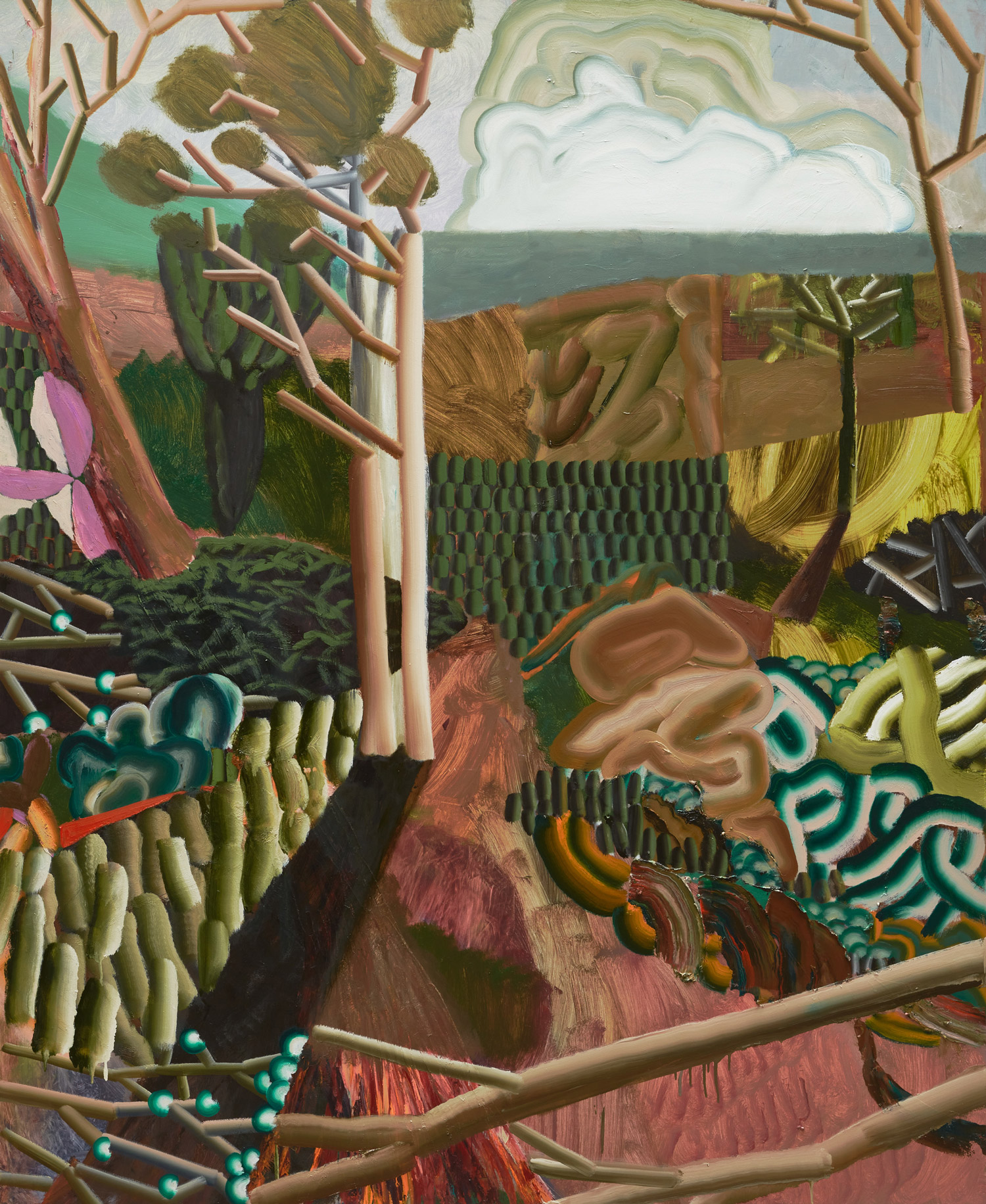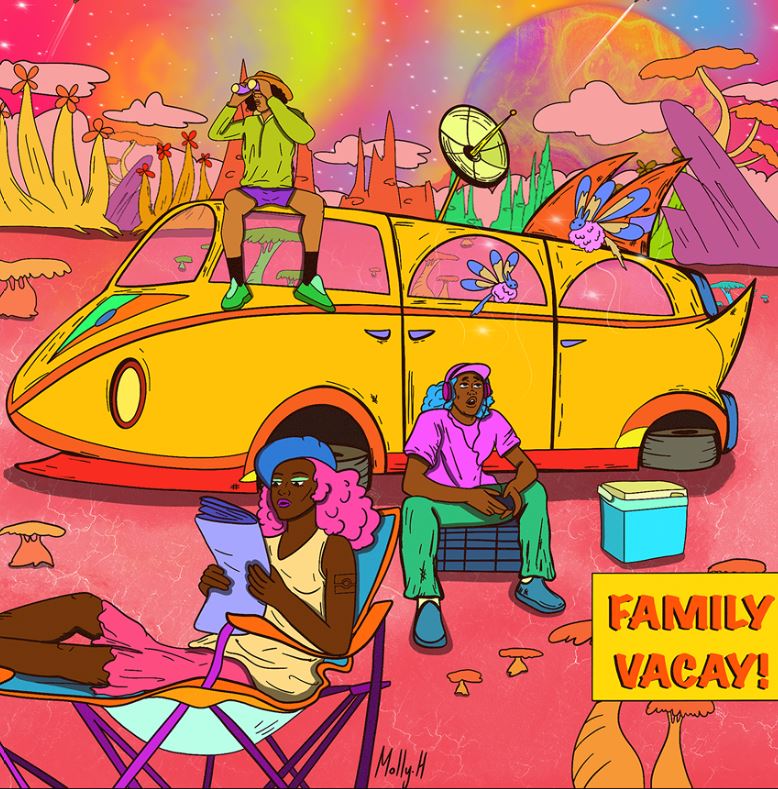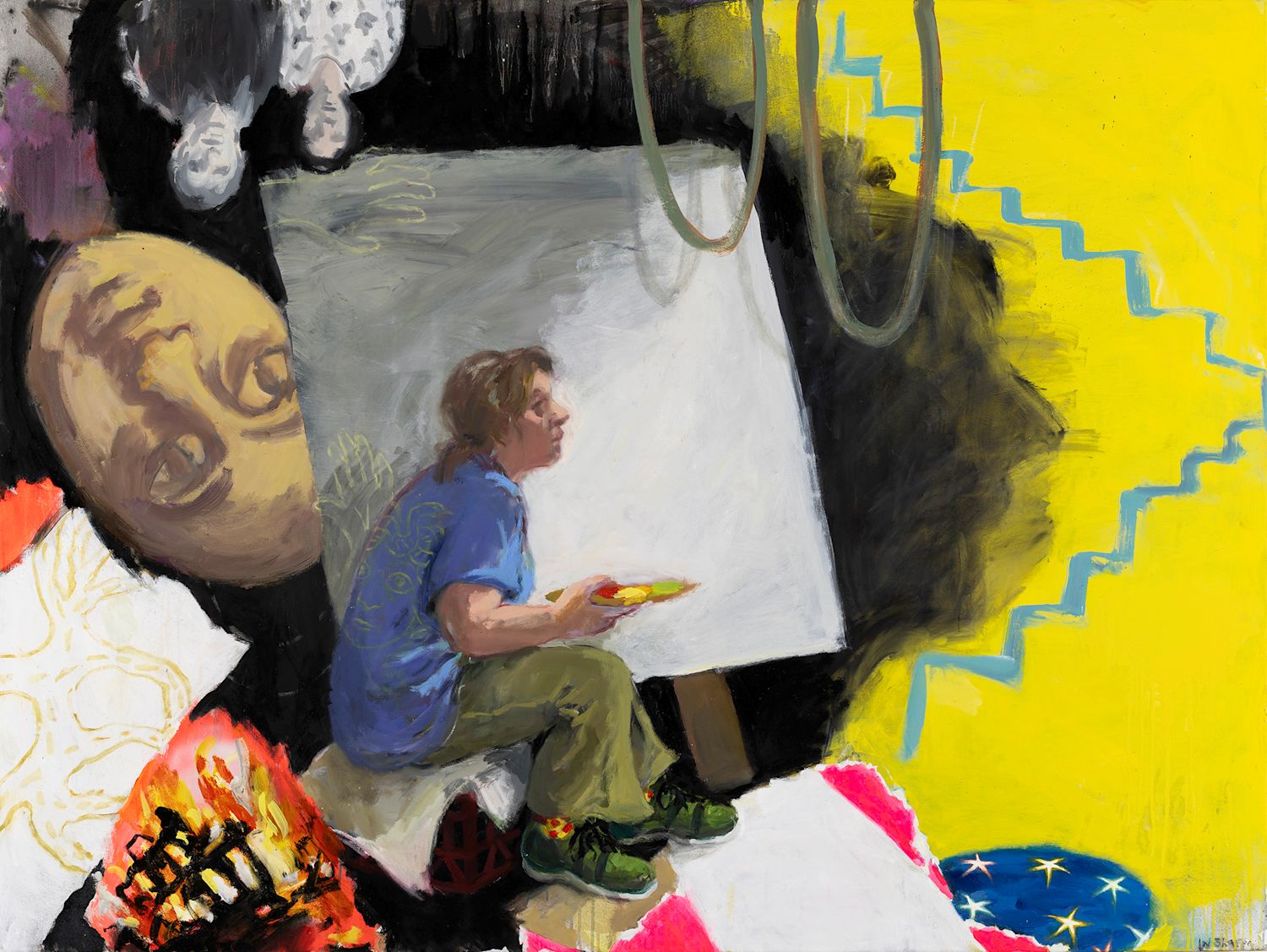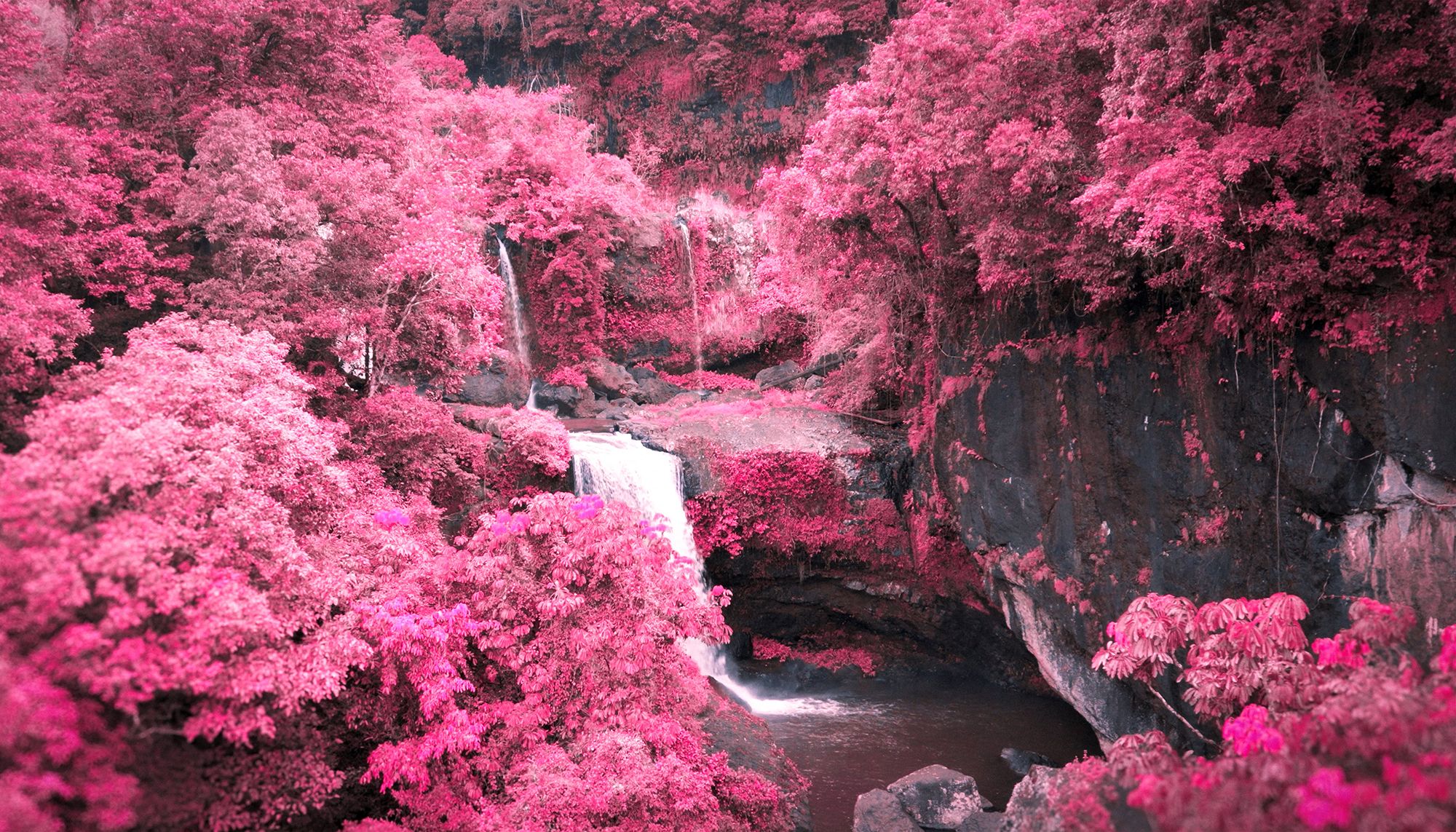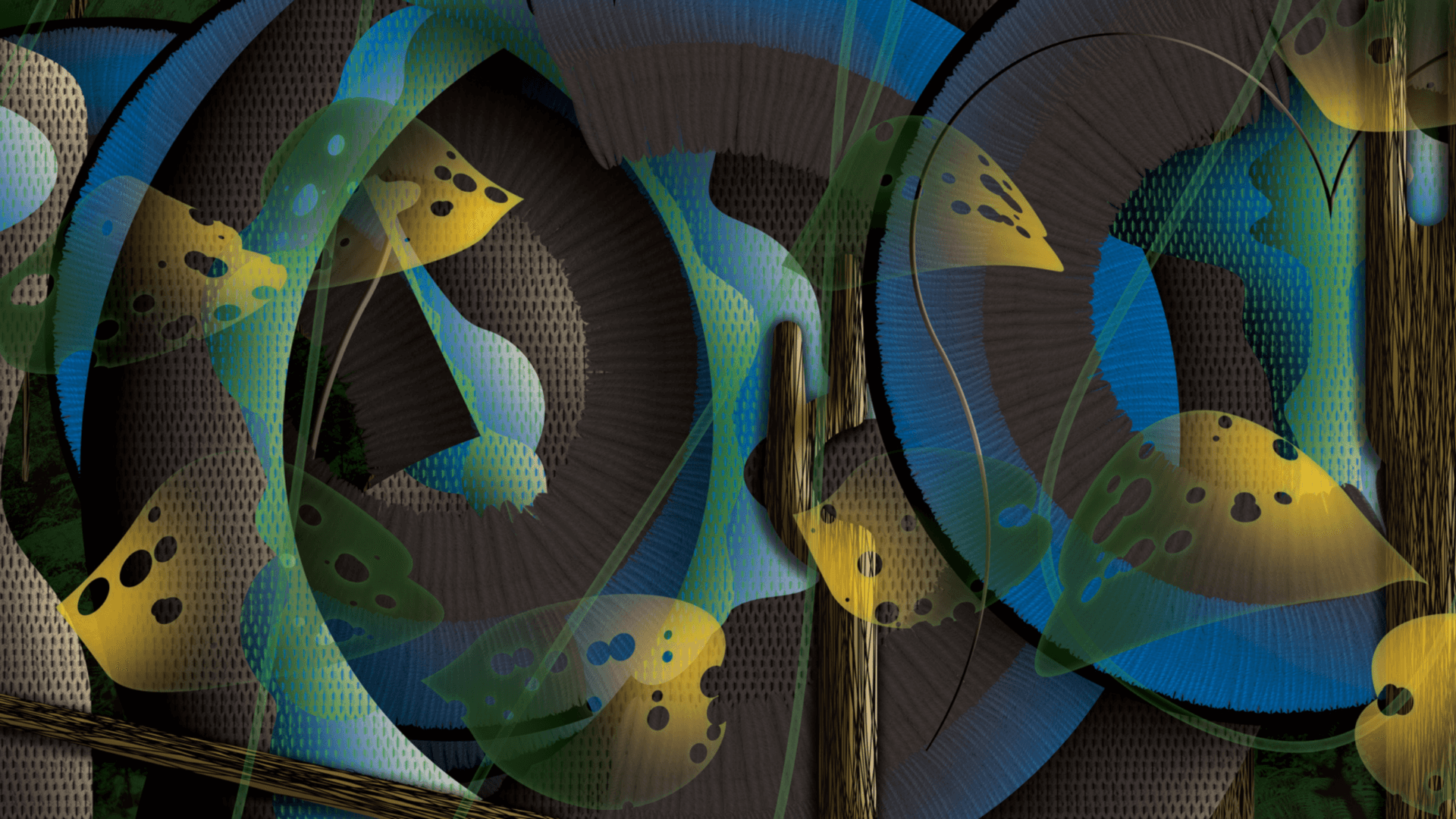Tony Albert’s projection Valley Walkabout (2022) considers the surrounding night sky as an infinite canvas, featuring flying creatures such as Superman, bats, spaceships, rockets and planes, and even a flying goldfish – because “the water was getting too hot and it needed to leave its home” (1). Ever the self-professed Australien, Albert might be taken for the Basquiat crown clad E.T. in the middle of the canvas, gazing lovingly into the far reaches of the galaxy as space invaders scout for something to devour.
Collage and iconoclasm are hallmarks of Albert’s universe. In Walkabout, one can recognise a number of established motifs, while others are new. Perhaps of most immediate visual impact are the 3D background pyramids: made out of Aboriginal playing cards, they relate back to Albert’s imagery collection of Aboriginalia, a term coined by the artist to describe historic objects bearing inauthentic representations of Aboriginal people and culture. In Walkabout, this iconography also includes kitsch caricatures and memorabilia of Aboriginal boys and men as either doll-like figurines or stereotypical “noble savages”. Albert hollows out all meaning from the pyramids except for its diagonal intersecting lines, envisioning them instead as cross boomerangs from the coastal rainforests of North Queensland. From Cardwell to the Mossman River, cross boomerangs were thrown exclusively by older Aboriginal boys and men, their tips lit at night to produce a blazing fire-like path in the sky (2).
Valley Walkabout’s pulsating bullseye targets converse with the caricatures and boomerangs. Their reflection in the lens of CCTV cams allude to not only the universal feeling of being under constant watch in public spaces, but the relentless persecution of Aboriginal and Torres Strait Islander boys and men in this sphere. Interwoven into this unfolding visual narrative are Walkabout’s passages of text, aligned and kerned like verses of a concrete poem. The larger Once upon A time crosses with the vertically cascading statement, VOTE YES FOR ABORIGINES, their perpendicular relation intermingling into variations such as VOTE YES Once FOR ABORIGINES and VOTE upon A time. Never one to undermine the interpretive capacity of his audience, Albert then frames these sentences with the follow-up: I WANT NOTHING [/] EVERYTHING. For the year is 2022, a Voice to Parliament referendum is on the horizon, yet what is sought politically is but fundamental common sense, a given for what was, is, and always has been, Aboriginal land.
Albert’s visual ambiguities are liberating in that they absorb and rewrite symbols of colonial oppression in favour of a humorous and optimistic high road. For example, does Once upon A time speak of the erasure and the stealing of Aboriginal peoples and culture, or of deep time? The impossible geometry of the red circle in the right corner of Walkabout offers equally ambiguous responses, at once standing in for the former, while pointing to a stronger, infinitely actualising time space continuum where Aboriginal culture, stories, and dreams prevail.
Notes
(1) Tony Albert, email exchange with artist, November 19, 2022.
(2) “Indigenous cross boomerang from the Cairns area, 1900,” Australian Museum, last modified March 17, 2021, https://australian.museum/learn/cultures/atsi-collection/boomerangs/indigenous-cross-boomerang-from-the-cairns-area1900/
Tony Albert’s multidisciplinary practice investigates contemporary legacies of colonialism, prompting audiences to contemplate the human condition. Drawing on both personal and collective histories, Albert explores the ways in which optimism can be utilised to overcome adversity. His work poses important questions such as how do we remember, give justice to, and rewrite complex and traumatic histories.
Albert has exhibited extensively both nationally and internationally. Recent solo exhibitions include; Remark, Sullivan+Strumpf (2022); Conversations with Margaret Preston, Sullivan+Strumpf (2021); Duty of Care, Canberra Glassworks (2020); Wonderland, Sullivan+Strumpf, Sydney (2019); Encounters, Art Basel Hong Kong (2019); Confessions, Contemporary Art Tasmania (2019); and Visible, Queensland Art Gallery | Gallery of Modern Art, Brisbane (2018).
Image: Tony Albert, Valley Walkabout (2022). Still


